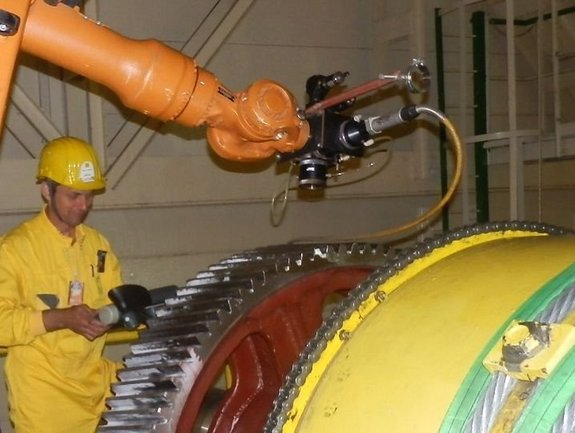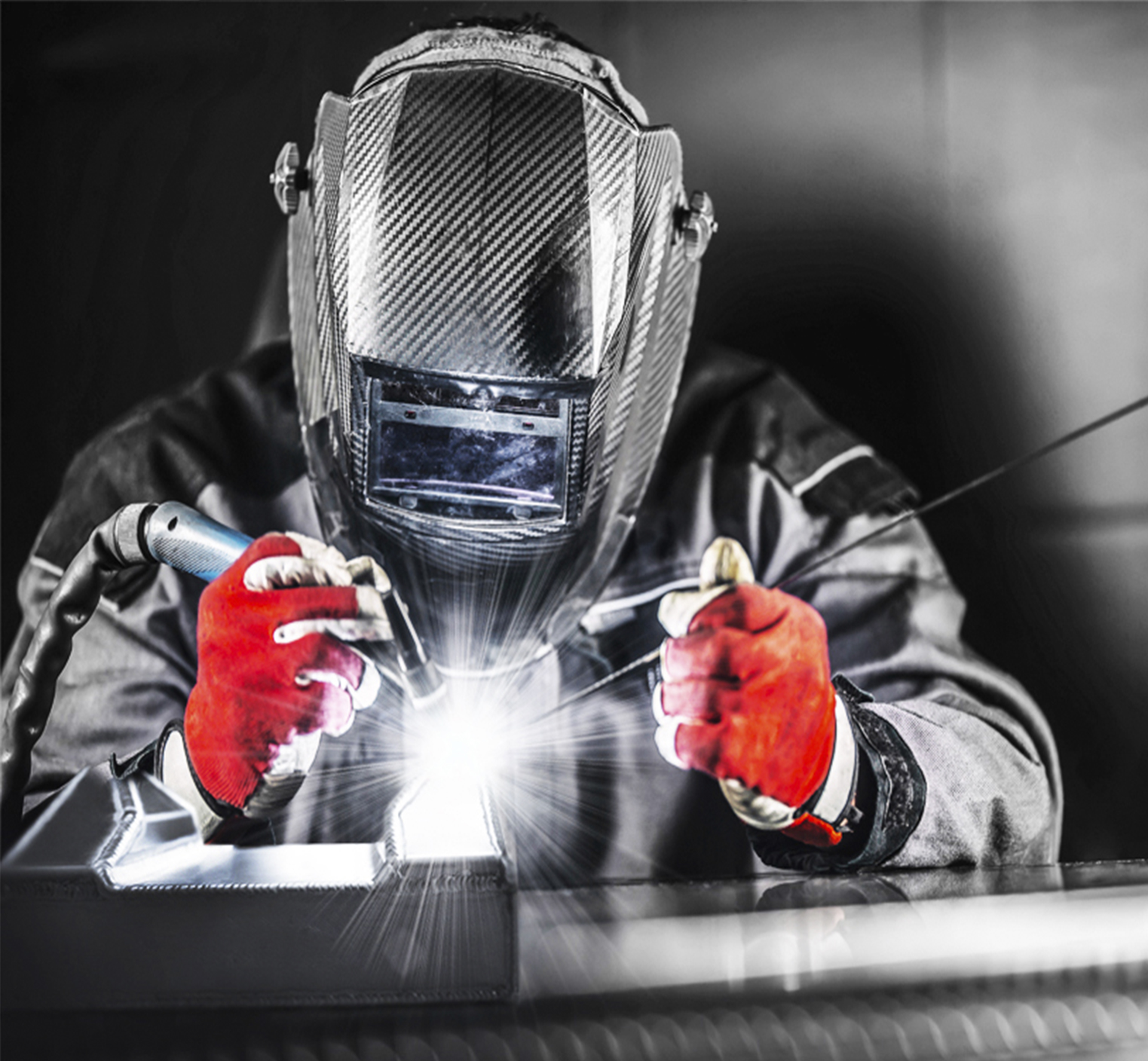All About Welding: Trick Insights Into Techniques and Finest Practices for Success
Welding encompasses a variety of techniques, each matched for details products and applications. Comprehending these methods, such as GMAW, SMAW, and TIG, is crucial for achieving optimal outcomes. In addition, the right tools and safety practices can not be neglected. As preparation and repairing play crucial functions in the welding procedure, mastering these elements can substantially improve the high quality of the end product. What are the essential aspects that guarantee a successful weld?
Understanding Different Welding Techniques
Welding methods incorporate a selection of approaches, each matched to particular applications and materials. Amongst the most usual techniques are Gas Metal Arc Welding (GMAW), Secured Metal Arc Welding (SMAW), and Tungsten Inert Gas Welding (TIG) GMAW, likewise called MIG welding, is popular for its rate and adaptability, making it excellent for thin materials. SMAW, or stick welding, is preferred for its simpleness and efficiency in exterior atmospheres, particularly with thicker steels. TIG welding uses accuracy and control, making it suitable for elaborate work and non-ferrous metals (Welding). Each technique has its special benefits and factors to consider, allowing welders to choose the very best approach based upon the task's demands, product kind, and preferred results. Understanding these strategies is necessary for successful welding
Vital Welding Equipment and Tools
While various welding strategies need particular abilities, the ideal devices and devices are equally essential for attaining high quality outcomes. Vital welding devices includes welding machines, which vary relying on the technique-- such as MIG, TIG, or stick welding. Safety equipment, consisting of handwear covers, helmets, and aprons, guarantees safety and comfort throughout the process. In enhancement, clamps and fixtures help secure products in position, ensuring precision in welds. Consumables like welding rods, wire, and protecting gas are also essential components that influence the top quality of the weld. Additionally, tools such as cutters and grinders help with surface area preparation and post-weld completing, contributing to an expert outcome. Spending in premium devices ultimately improves the efficiency and effectiveness of welding projects.
Safety And Security Practices in Welding
Proper safety practices are important in the welding market to secure employees from possible threats. Welders need to wear appropriate personal protective devices (PPE), consisting of headgears with appropriate shading, handwear covers, and flame-resistant clothes. Appropriate ventilation is vital to minimize direct exposure to hazardous fumes and gases created throughout the welding process. In addition, employees need to be educated in the appropriate handling of welding equipment to stop crashes. Fire precaution, such as keeping flammable products far from the welding area and having fire extinguishers readily offered, are needed. Routine evaluations of tools and offices can help identify possible risks prior to they result in crashes. By sticking to these safety and security practices, welders can produce a more secure working atmosphere and minimize dangers linked with their profession.
Preparing Materials for Welding
Preparing products for welding is a vital step that substantially affects the quality and integrity of the end product (Montana Mobile Welding and Repair Belgrade Welding). Appropriate preparation entails cleaning the surface areas to get rid of pollutants such as rust, oil, and dirt, which can jeopardize the weld. Methods such as grinding, fining sand, or making use of solvents are commonly utilized to accomplish a clean surface. In addition, making sure that the products fit together well is crucial; spaces can cause weak welds. It's likewise vital to take into account the alignment and positioning of the components, as this will impact the ease of welding and the last end result. Ultimately, picking the appropriate filler product and ensuring compatibility with the base metals is vital for attaining solid, long lasting welds
Tips for Achieving High-Quality Welds
Accomplishing top quality welds calls for attention to detail and adherence to ideal practices throughout the welding process. Proper joint prep work is important, making certain surface areas are clean and free from contaminants. Choosing the suitable filler product and welding method based on the base metals is important for ideal bonding. Keeping constant travel rate and angle while welding can avoid defects and advertise uniformity. In addition, regulating heat input is important; extreme warmth can result in warping and compromised joints. If needed, routinely checking the welds throughout the process enables for instant changes. Finally, employing appropriate post-weld treatments, such as cleansing and anxiety alleviation, can boost the resilience and stability see here now of the weld, ultimately guaranteeing an effective outcome.
Repairing Typical Welding Issues
Welding usually presents obstacles that can affect the high quality and honesty of the last product. Usual concerns such as porosity, inconsistent weld beads, and getting too hot can develop, each requiring particular repairing strategies. Understanding these problems is essential for welders to enhance their abilities and accomplish ideal results.
Porosity Troubles Discussed
Although porosity can typically be ignored, it stays a vital issue in welding that can compromise the stability of a finished item. Porosity describes the presence of small gas pockets within the weld grain, which can deteriorate the joint and lead to early failure. This issue typically arises from contaminants, wetness, or inappropriate shielding gas insurance coverage during the welding process. To reduce porosity, welders ought to confirm that the base products are dry and tidy, make use of suitable shielding gases, and preserve constant welding criteria. Routinely examining the equipment and environment can likewise assist recognize potential issues before they show up in the weld. Attending to porosity properly is vital for attaining strong, durable welds that meet high quality criteria.

Irregular Weld Beads
Irregular weld beads can substantially affect the top quality and toughness of a finished product. Various aspects add to this issue, consisting of improper traveling rate, inaccurate amperage setups, and inconsistent electrode angles. When the welder relocates also rapidly, a grain might appear narrow and lack penetration, while moving too slowly can trigger excessive accumulation. In addition, making use of the incorrect amperage can cause either damaging or extreme spatter, both of which compromise weld integrity. The welder's method, such as inconsistent lantern movement, can also bring about irregular bead appearance. To reduce these troubles, welders need to concentrate on keeping steady, regulated movements and making sure proper equipment setups to achieve harmony in their welds. Uniformity is essential to attaining solid and dependable welds.
Getting Too Hot and Bending Issues
Extreme heat during the welding process can cause significant overheating and deforming issues, influencing the architectural stability of the work surface. These problems typically materialize as distortion, which can compromise alignment and fit-up, making further setting up testing. Factors adding to overheating consist of the selection of welding criteria, such as voltage and travel speed, as well as the kind of product useful reference being welded. To minimize these issues, welders need to keep regular travel speed and proper warm input while keeping track of the workpiece temperature. Furthermore, preheating or post-weld warm therapy can assist alleviate stress and anxieties brought on by quick air conditioning - Belgrade Welding. Routine evaluation and adherence to finest practices are vital in stopping overheating and making certain the longevity and reliability of bonded structures
Regularly Asked Inquiries
What Are the Profession Opportunities in the Welding Sector?
The welding industry uses varied job chances, consisting of settings as welders, inspectors, teachers, and designers. Professionals can function in manufacturing, construction, aerospace, and automobile markets, taking advantage of strong need and competitive wages in various functions.
How Can I Enhance My Welding Speed Without Compromising High Quality?
To improve welding speed without compromising high quality, one must practice reliable techniques, keep equipment, enhance settings, and improve hand-eye coordination. Normal training and looking for responses can likewise considerably add to achieving quicker, top quality welds.
What Certifications Are Readily Available for Welders?
Many qualifications exist for welders, including those from the American Welding Society (AWS), the National Facility for Building Education and Research Study (NCCER), and various industry-specific organizations. Extra resources These qualifications improve employability and show skill efficiency.
How Does Welding Influence the Qualities of Metals?
Welding influences the residential or commercial properties of metals by altering their microstructure, which can lead to adjustments in strength, hardness, and ductility. Warm input and cooling rates during the process significantly impact these product qualities.
Can I Bonded Dissimilar Metals Together?
